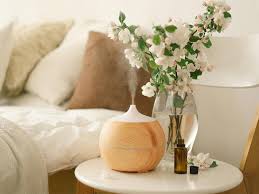The unmistakable aroma of a luxury hotel—clean, calming, and subtly opulent—is no longer confined to five-star lobbies. Increasingly, homeowners are embracing scent as an essential element of interior design, turning their living rooms and bathrooms into sanctuaries that smell, quite literally, like a suite at The Ritz.
From cold-air diffusers to palo santo wood, a new wave of fragrance-forward living is reshaping how people engage with their domestic spaces. It’s not just about masking odors—it’s about crafting mood, memory, and identity through scent.
“Fragrance is the silent architecture of a space,” says Meera Chopra, a Mumbai-based olfactory consultant who works with both luxury hotels and private clients. “It’s what makes a space feel alive—and linger in your memory.”
A New Standard of Luxury, Within Reach
According to a recent lifestyle report by The Times of India, homeowners are turning to seven key scent strategies used by luxury hotels to bring that same sense of elegance and comfort into their own homes.
At the top of the list: reed and cold-air diffusers, now a staple in fragrance-conscious households. Unlike candles, these devices disperse aroma continuously, offering an understated yet lasting presence in a room. They often use essential oils like sandalwood, white tea, or fig—scents associated with relaxation and understated wealth.
Then there’s the rising popularity of palo santo, a sacred South American wood burned for its warm, grounding aroma. Once confined to yoga studios and wellness retreats, it’s now showing up in living rooms from Los Angeles to Lajpat Nagar.
Spa-Like Showers and Citrus-Scented Soaps
Bathrooms, too, are getting an olfactory upgrade. Hanging eucalyptus sprigs in the shower has emerged as a DIY spa trend, as the plant releases essential oils when hit with steam—creating a rejuvenating and antimicrobial effect.
Elsewhere, natural wax candles made from soy or coconut wax are replacing synthetics, delivering gentle light and layered scent without chemical irritants. Pair them with linen sprays or room mists for instant atmosphere before guests arrive.
Even the most utilitarian spaces—like kitchens and entryways—are getting attention. Experts suggest using scent “families” across rooms to avoid clashing notes. A home built around citrus or sandalwood, for example, can maintain a seamless, signature identity.
Fragrance Meets Identity
What hotels have mastered—crafting a branded scent experience that’s as memorable as the sheets or the service—is now a domestic ambition.
The underlying science is persuasive. Scent is directly linked to the brain’s limbic system, which governs emotion and memory. A consistent home fragrance doesn’t just impress guests—it shapes how residents feel in their own space.
In an era when people are spending more time indoors—working, relaxing, or entertaining—multi-sensory design is no longer a luxury; it’s a strategy for emotional well-being.
A Growing Market for Lifestyle Scenting
This sensory shift is also fueling a booming market. Home fragrance is now a multibillion-dollar global industry, with niche perfumers, wellness brands, and hotel chains offering curated diffusers, candles, and sprays.
Retailers are even offering subscription scent boxes, and interior designers are consulting on fragrance layering as part of holistic home makeovers.
“It’s no longer just about how your home looks,” says Chopra. “It’s about how it feels. And that begins the moment you walk in—and take a breath.”


